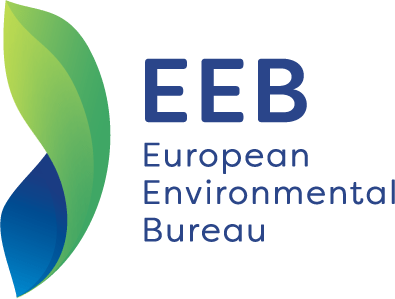Member States fall short of steering the automotive industry on a circular path
Today, Europe’s Environment Ministers bowed to pressure from the automotive industry by voting to weaken a crucial regulation to make the sector more circular, warn environmental NGOs.
Governments voted on a proposal to revise and merge the outdated End-of-Life Vehicles Directive and the 3R Type-Approval Directive into a single Regulation on Circularity Requirements on Vehicle Design and on Management of End-of-Life Vehicles [1].
The proposal aims to strengthen the EU single market while improving the circularity of the automotive sector and reducing the environmental impacts associated with the design, production, use, and end-of-life treatment of vehicles.
The extended scope of the regulation to cover more vehicles, and the inclusion of specific measures such as a Circularity Vehicle Passport (CVP), an EU-wide Extended Producer Responsibility (EPR) system to hold manufacturers accountable, and new requirements on the reuse of parts, components’ recycled content, better collection and improved treatment at the end of a vehicle’s life, were intended to steer the automotive sector towards decarbonisation and circularity [2].
However, while the Council made some cosmetic improvements, it failed to remedy several missed opportunities in the Commission’s initial proposal, and watered-down key provisions, despite the calls by environmental organisations, consumer groups and industry alike [3].
Notably, the Council’s position:
- fails to address the unsustainable material use and footprint of the sector by decreasing the number of cars, and reversing the trend to ever bigger vehicles;
- still focuses on recycling while ignoring the preferable strategies of durability, reuse, and repair, which aim to extend the lifespan of cars – particularly important after the exclusion of vehicles under the Ecodesign for Sustainable Products Regulation (ESPR);
- insufficiently implements the Polluter Pays Principle, neglecting the upper levels of the waste hierarchy and creating an unfair double regime for non-EU countries receiving used vehicles from the EU.
Fynn Hauschke, Senior Policy Officer Circular Economy and Waste, European Environmental Bureau (EEB), said:
“Member States keep dodging the elephant in the room: the ever-increasing size and number of cars on roads is driving up the automotive sector’s material use and environmental footprint. Without tackling this and requiring carmakers to build durable and repairable vehicles from the start, the regulation won’t put the sector on a greener path.”
Barbara Metz, Managing Director, Environmental Action Germany (Deutsche Umwelthilfe – DUH), said:
“The anti-recycling cartel, for which the European Commission fined the automotive industry 458 Million Euro, has shown that VW, Mercedes, BMW need stricter rules when it comes to circular economy. The position of the EU Council on the vehicles regulation shows that the environment ministers of the Member States are bowing to the will of the car industry. Actual producer responsibility requires to oblige all producers without exceptions to join a producer responsibility organisation that charges sufficiently high fees to enable high-quality recovery of critical raw materials and other valuable materials. Additionally, these fees must be modulated in such a way that producers with particularly environmentally harmful vehicles must pay significantly higher fees.”
Notes
[1] Council of the EU’s press release
[2] EEB feedback to the European Commission: “Opportunities and roadblocks in the proposal for a new EU regulation on vehicle design and end of life” (2023)
[3] Joint statement by environmental organisations, the insurance sector, consumer organisations, the automotive aftermarket, and the repair community concerning repair and repair-related design aspects (2025)
Joint statement by glass producers, non-ferrous metal industry, and environmental organisations regarding measures to support the reuse of components and high-quality recycling of materials from end-of-life vehicles (2025)
Joint statement by environmental organisations, think tanks, and recycling industry to boost the use of recycled steel in the automotive sector (2025)
Joint statement by waste management and recycling industries, automotive suppliers, and environmental organisations in support of ambitious recycled content targets for plastics (2024)

